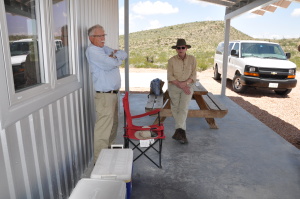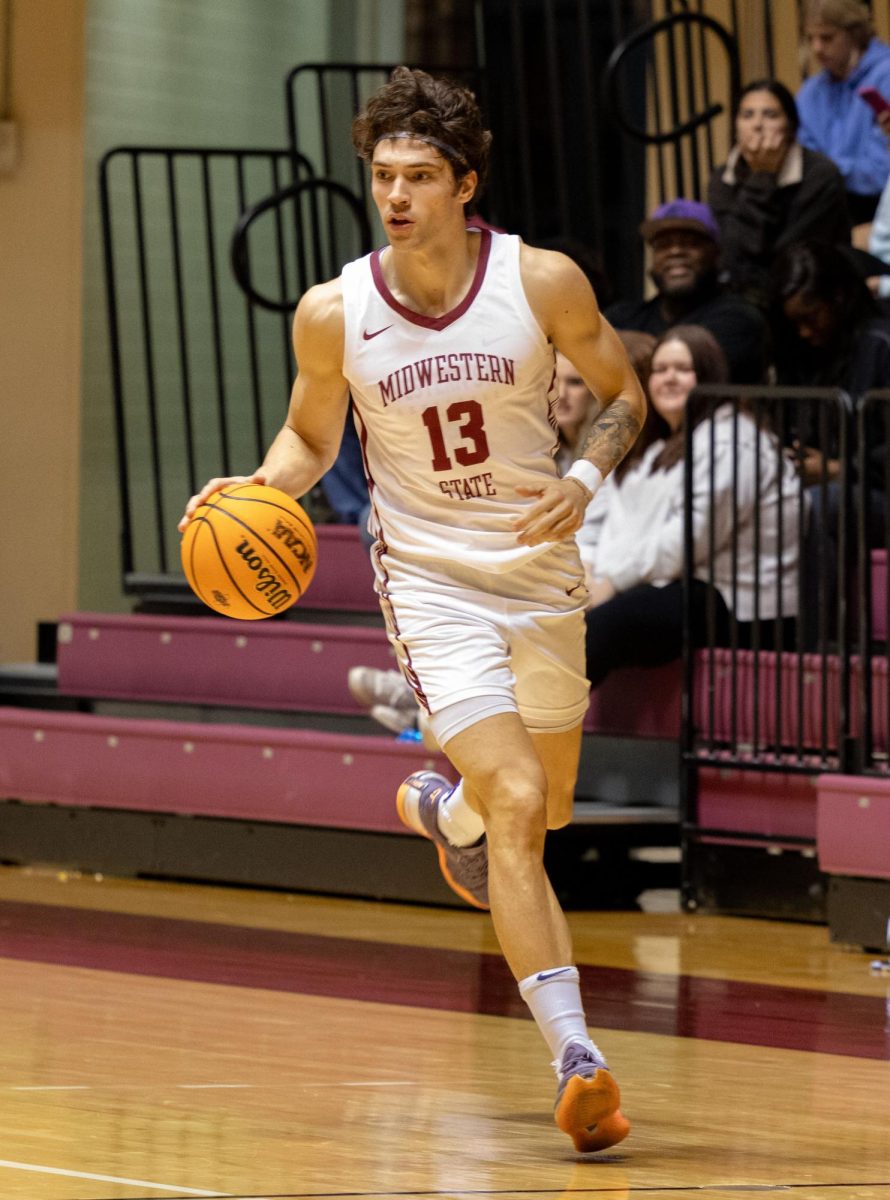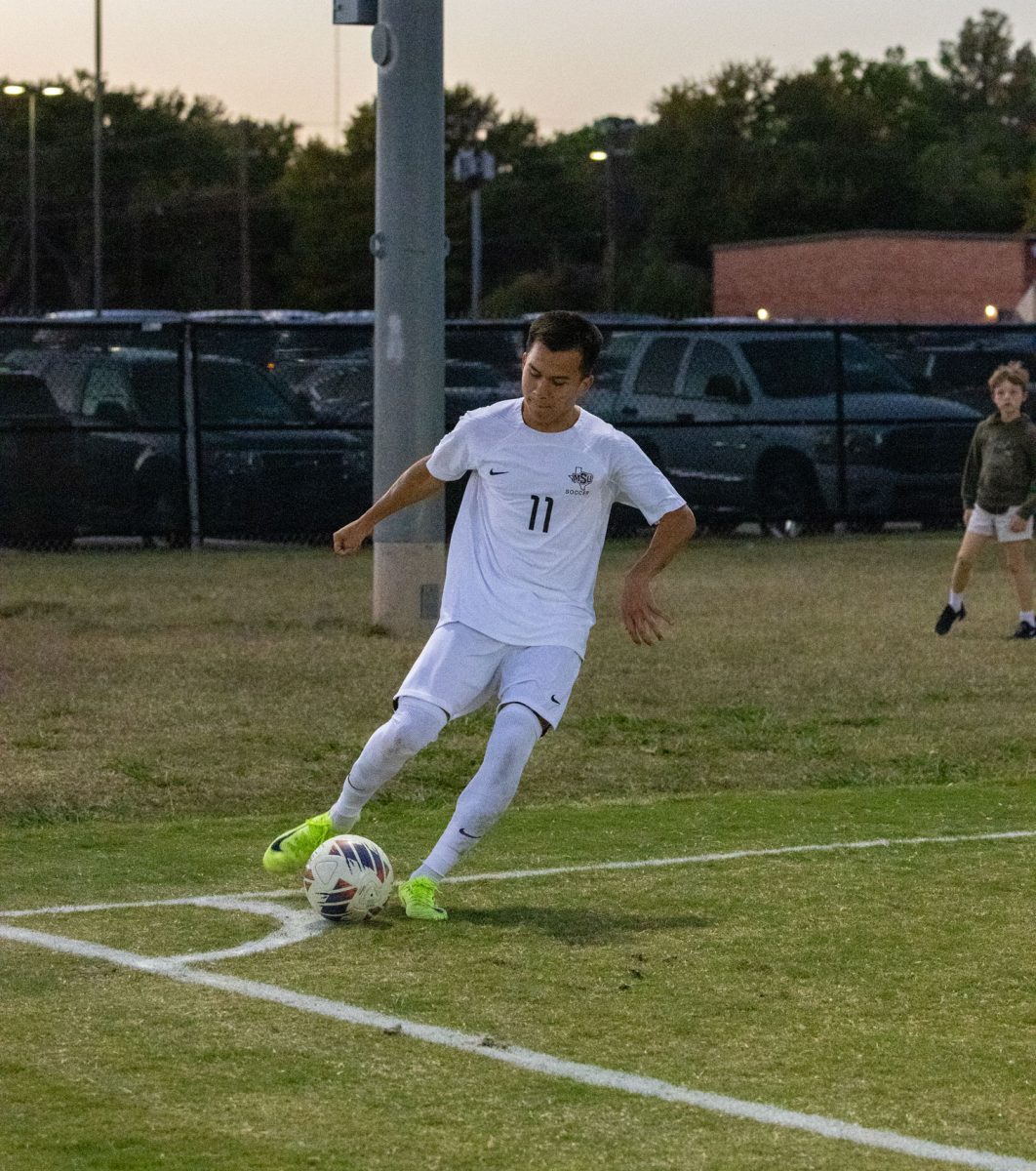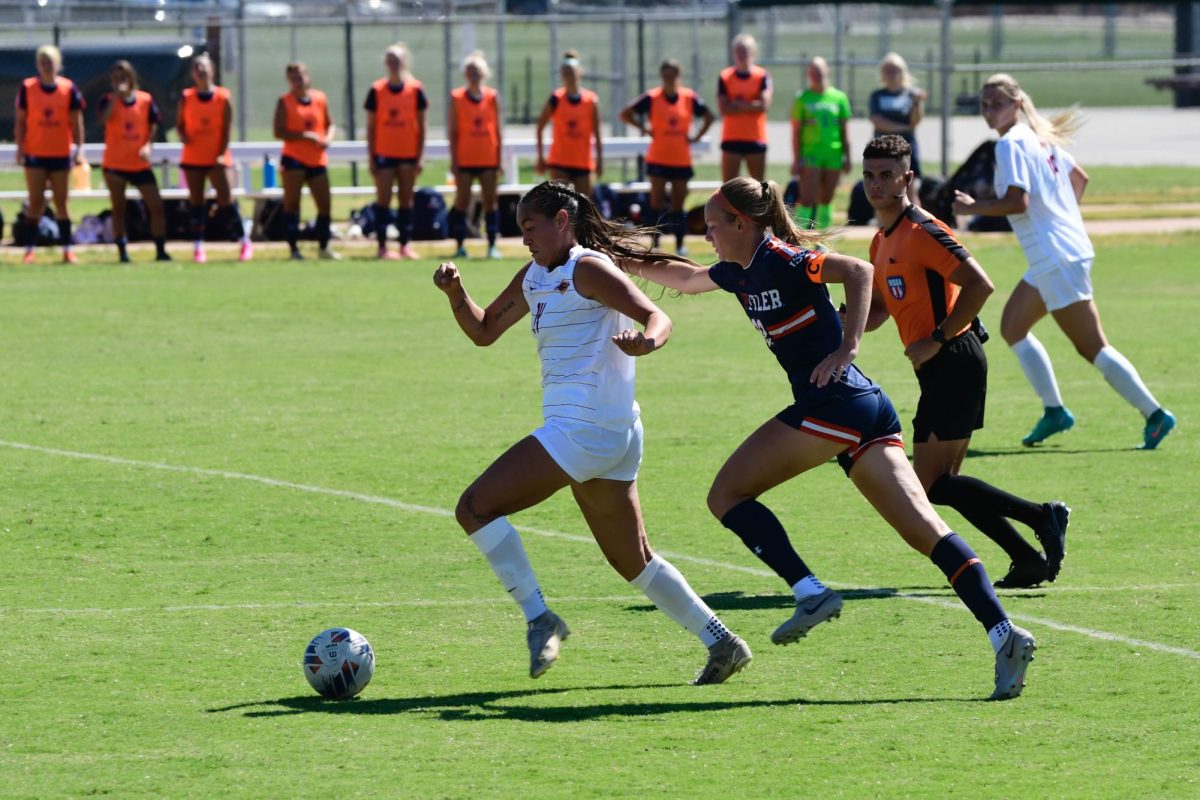
The Marfa, Texas highway becomes a rocky, turbulent, might-have-to-pull-over-if-you-get-car-sick kind of road leading to an off-the-grid extension of MSU — the Dalquest Desert Research Station.
The dream for the facility began in 1968 when the late Walter Dalquest, the first Hardin Professor, bought two sections of the West Texas terrain prevalent with canyons, valleys, and feral flora and fauna.
Now, it’s a reality.
Jesse Rogers, university president, said, “Dr. Horner and I, from the time that we were really young guys, had dreams about something like this and I’m not sure we ever really thought it would come true. It’s one of the really significant accomplishments of the time that I have been president.”
The research station includes the Joe B. Hood Research Laboratory, a 2,000-square-foot structure powered by solar energy, kept cool by the desert winds and constructed from the bottom up to leave as little of a carbon-footprint as possible.
“Every bit of this building, except the concrete, came in behind the back of a pick-up on a trailer,” Glenn Perkins, builder of the project, said. “The plan was to build a building that wouldn’t react to the environment – it doesn’t have anything to rot, there’s nothing to attract insects, I hope it’s as impervious as I think it is.”
Perkins and his construction team, along with the principle architect, Dick Bundy, spent about ten months building the facility.
“If you just built a residential, or pre-engineered metal building frame, that’s got square corners and square edges, it is not aerodynamic and so it does not sit on a desert floor very well,” Bundy said.
In addition, Bundy said the building has no heating or cooling so they created a Quonset-style structure, common in West Texas. At night when the desert gets cool, the Quonset design stores that cool air which can be used to cool the building the next day. Just the opposite occurs with the warm air.
“Can you imagine, first of all the design of something that will last in this kind of weather, but just getting the materials in here to build something like this? I just couldn’t imagine how that could be done,” Rogers said. “If it had not been for Dick Bundy and Glenn Perkins – they’re the only two people that I know off, if not the only two people in the world that could have carried this off.”
The architect and constructor teamed up to put it all together, thanks to donor contributions totaling $840,000.
“So I’m very grateful to several families in Wichita Falls — the Hood Family, the Bolin Family, the Gunn’s, the Kimbells. They all gave to the development of this research station,” Rogers said.
But the land itself is thanks to Walter and Rose Dalquest who donated it to MSU in 1996 with a deed restriction allowing for the land to only be used by biologists and geologists because of its scientific value. In 2004, Rose Dalquest purchased nearly three additional sections next to to the original property for MSU.
“I’m going to be retiring from Midwestern in about three or four weeks after 48 years there now and this research station is something that Dr. Horner and I, and I’m sure Walt and Rose have dreamed about for all those years too. And here it is, it’s come true,” Rogers said. “We’ve just now got to use it to its fullest potential for Midwestern State University that we have something like this to give many graduate students a really unique experience of being in this kind of climate, in this kind of field.”
In 1999, a graduate student working under Norman Horner, director of natural laboratories, was unable to classify a spider he collected. He took it to Horner, who could not classify its family either.
“I sent it to Texas Tech and they couldn’t get its family,”Horner said. “It went from there to the California Academy of Science and they couldn’t get its family. It went from there to the American Museum of Natural History in New York and Dr. Norman Platnick, who knows more about spiders than anyone else. He wrote back to California and said ‘I don’t know what those Texas boys are trying to do to you but this spider did not come from North America.’”
Horner said he assured them that it did and put together a week-long expedition to find it. But it was unsuccessful and they had just the one spider, which had been caught in a trap. Horner said that eventually, they found out the spider lived with ants.
A group from the Denver Museum of Natural History and Science came to the site and one of the girls wanted to dig up an ant nest to find it. Horner said he told her she was crazy, that they couldn’t do that. But she proved him wrong.
“We dug for three days in the heat and we found four,” Horner said. “We’ve got that little booger’s number and we’re now up to about 110 specimens that have been collected. And so the jury’s still out on it, but it’s probably going to be a new family, perhaps a new genus and a new species.”
Horner said this discovery is just the beginning.
Bill Cook, chair and professor of biology, has been going to the Dalquest site since the early ’90’s.
“I like this, there’s a lot to be found out here that hasn’t been found,” Cook said. “I guess that’s what I like, something that’s not already so well known.”
Cook’s first graduate student at the site plotted out ten thousand square meters and surveyed the plants in that area for close to three years.
“She came up with a basic plant list for what’s on top and you’ll see that down below in the canyon is a different place than what’s on top when you look down in there,” Cook said. “So we have still yet to get students down in there. And I come down and I collect as I can along the way.”
Cook’s hobby at the site is gathering the weather data. He knows how much rain has fallen for almost every month for the past 11 years.
“One thing a lot of people are surprised by is how much green there is. This place is pretty green, but the ground is bare between plants,” Cook said. “But if you come out at the right time in the spring, after a good rain, there’s more color down here than there is in Wichita Falls.”
Cook said he does not know exactly what good will come from the Dalquest site, but it’s going to be a lot.
“And we just don’t know who’s going to be attracted from where, but have had people making inquiries already, people who we have never met before,” Cook said. “A place like this is unique, and people are going to come here to take advantage of it, from around the world, so we’re waiting for them, and working along the time.”
Working along the time with him is Ray Willis, assistant professor of biology.
“What I’ve started doing is try to find as many grad students as possible, to do basic surveys because they haven’t really been done,” Willis said. “I have one guy that just finished up – he’ll be graduating in December. He’s done all of the small mammals.”
Another student is working on the bat species found in the region. They are trapping bats every month.
“This is a unique area because they use this as a corridor anytime they are switching their seasons,” Willis said. “We also have bats that stay here year round. And one of my hypotheses is that you’re going to get some Mexican species that were not previously established in Texas, and this is of course the first place they will be found in any large quantities.”
Additionally, Willis said there are wild cattle that come up from Mexico.
“I’ve seen hundreds of pictures of cattle, but I’ve never seen one in person,” Willis said. “They literally get out of the way as they hear you coming through.”
Willis is piecing projects together in order to get an overall mosaic of what is actually living on the Dalquest land. And he tries to come out to the site as often as he can, which, he says, is the best part.
“I got the easiest part of the job, they did the hard work of getting the station and everything, making sure the finances are here, and I get to come out and play,” Willis said. “This is what I look forward to every month.”
It all leads back to Walter and Rose Dalquest.
“Dr. Dalquest not only was brilliant guy, I don’t know how many hundreds of scientific papers he published, books he published, he even did a PBS series,” Rogers said. “But he was such a character too, just hard to describe Walt Dalquest.”
Rogers was teaching chemistry and became friends with Dalquest and Horner. He accompanied them on their camping trips which got him interested in field sciences. Back then, there was only that bumpy road to the unexplored land.























